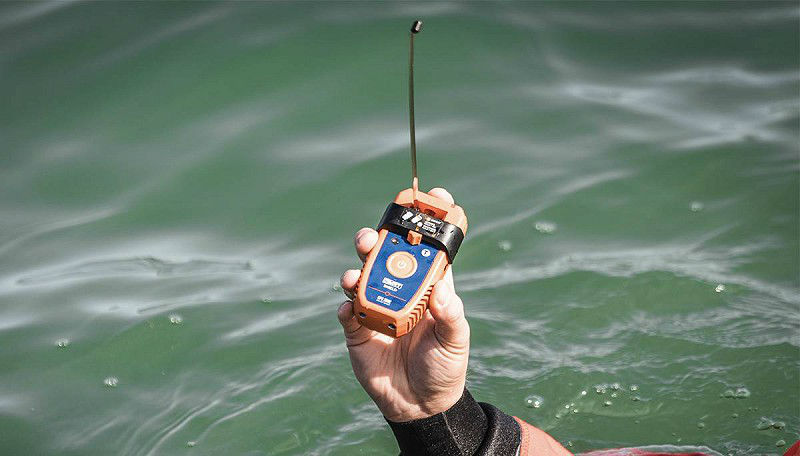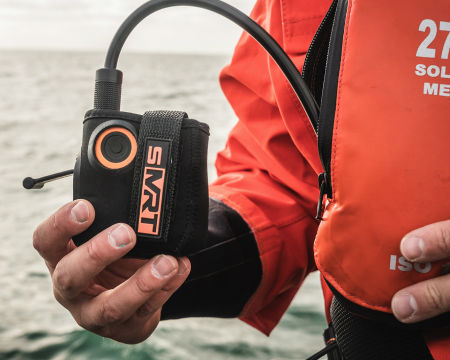What is a True Water Activating PLB?.

Personal Locator Beacons (PLBs) have a range of applications, from protecting explorers, hikers and adventurers alike on their weekend hobbies, where a telephone signal might not be available in an emergency, to seafarers and offshore workers in the commercial world where the risk of going overboard is very real and potentially life-threatening.
Firstly, do you need a PLB?
In certain commercial industries and locations, wearing a PLB integrated into your life jacket is common practice, if not mandatory. In October 2019, the Maritime and Coastguard Agency (MCA) mandated that crew onboard UK fishing vessels of a certain size should be equipped with a PLB. Throughout Europe and most of the world, in the offshore wind industry, you will find it almost impossible to get offshore without a certified SOLAS life jacket (PFD) and PLB.
PLBs are a seafarers last line of defence – of course, your life jacket will keep you afloat, but it is your PLB that will alert people of the critical danger you’re in and take them to your position so you can be safely extracted from the water. So yes! If you’re at sea, the risk of going overboard is very real, and you should have a PLB with you at all times.
What type of PLBs are available?
There is a range of PLBs available that all have various activation methods; manually activated PLBs, which require some input from the user, “semi-automatic” which are activated upon inflation of the PFD. Lastly, we have true water-activated PLBs, that begin to transmit on immersion in water.
What type of PLB should you use?
Manual Activating PLB
In a commercial environment, manually activated PLBs should be avoided; if you enter the water unconscious or incapacitated in some way by injury or suffering from cold-water shock, the PLB will not activate and no one will be aware of the critical situation that you are in. Manually activated PLB does have its applications; 406MHz PLBs can only be manually activated per international standards, and a 406MHz PLB would be suitable for on-land activities and lone sailors.
Semi-Automatic Activating PLB
A semi-automatic PLB activates when the PFD inflates and either pulls a release clip or switch to activate the PLB. This is an obvious improvement and potentially safer option to a manually activated PLB, however, it still leaves several potential scenarios where the wearer would still be at risk: What if your PFD fails? What if you have a manually activated life jacket and you are not in a capacity to activate your PFD?
‘True Water’ Activating
In both of these scenarios, you have a PLB trapped inside of a PFD, not fulfilling its fundamental purpose of alerting your potential rescuer. A semi-automatic PLB goes someway to remove risk but does not cover all bases.
A PLB that activates automatically on immersion in water, using water sensors, will send a distress alert and your position as soon as you hit the water; whether your life jacket activates or not, whether you are unconscious or injured or incapacitated in any other way.
A water-activated PLB bypasses all of the potential risk scenarios of a manually or semi-automatically PLB. It ensures that the transmission of your location is sent as quickly as possible and with every second and minute you spend in the water reducing your chances of survival or avoiding serious illness or injury, every second matters.
Essentially, water activating PLBs have you covered for every eventuality. Your last line of defence is failsafe. So, the real question is: why would you accept anything less?
How does it work?
Watch our video below to see how one of our Water Activating PLBs, the sMRT AU10, works on immersion with water.
Want to find out more?
If you would like to find out more about our range of True Water Activating personal locator beacons, then don’t hesitate to get in touch with us today via info@mrtsos.com.
Article First Written:
10/02/2019
- What is a Personal Locator Beacon (PLB)?
- How Does a Personal Locator Beacon Work?
- What are the different types of PLBs?
- What are Local Area Systems?
- What is ELIFE?
- What is a True Water Activating PLB?
- What is the difference between a PLB and an EPIRB?
- What Is AIS, VHF and DSC?
- What is a 406 MHz PLB?
Contact Us
Find Us
Marine Rescue Technologies Limited
Wescom Group,
Unit J1, Springfield Way,
Anlaby, HU10 6RJ


